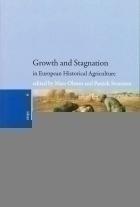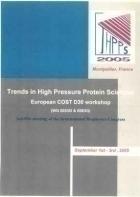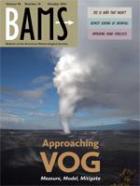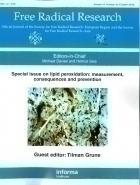
Powder Metallurgy - Third Annual Report

Frontin - L'œuvre gromatique - Corpus Agrimensorum Romanum IV Iulius Frontinus

General Activity Report 1991-1992 (4 copies)

Modelling Water and Nutrient Dynamics in Soil-crop Systems
- Pages: 272
- Author(s): K.CH. Kersebaum, JM. Hecker, W. Mirschel, M. Wegehenkel
- Publisher(s): Springer
- ISBN/ISSN: 978-1-4020-4478-6
Soil-crop-atmosphere interactions play a central role in the multiple functions of rural landscapes. Agro-ecosystem models are increasingly used to support decision making on different scales towards sustainable land use and management. This is accompanied by a demand of model users for model validation to get an idea about the reliability of models. This book contains articles from a workshop on “Modelling water and nutrient dynamics in crop-soil systems”. Data sets from lysimeters and experimental fields of multiyear crop rotations were provided for modellers. A unique data set is provided of a 100 year long term field experiment regarding crop yield and organic carbon development under different management systems.

Proceedings of the 2nd International Symposium on Wood Machining
- Pages: 513
- Author(s): S. E. Stanzl-Tschegg, M. Gindl, G. Sinn
- Publisher(s): Universitat des Lebens
- ISBN/ISSN: 978-3-9501315-2-9
Proceedings of the 2nd International Symposium on Wood Machining – Properties of Wood and Wood Composites Related to Machining, which took place in Vienna, Austria on 5-7 July 2004.

Growth and Stagnation in European Historical Agriculture
- Author(s): Mats Olsson and Patrick Svensson (Eds)
- Publisher(s): Brepols
- http://www.brepols.net/Pages/ShowProduct.aspx?prod_id=IS-9782503540764-1
- ISBN/ISSN: 978-2-503-54076-4
Agricultural production has been the basic and single most important factor for the well-being of mankind since the Neolithic revolution. Insufficient agricultural output has led to deficient means of subsistence and sometimes even starvation, while rich harvests brought about plenty and prosperity. Continuous increases in agricultural output have transformed whole societies and continents, bringing about radical changes in people’s lives and economic prospects.
This book is focused on measuring and explaining agricultural growth in Europe. For most countries statistics on agricultural production are either non-existing or shaky for the period up to the end of the nineteenth century. Consequently, researchers dealing with historical farming have been forced to put a lot of effort into reconstructing reliable data on inputs and outputs. The last decades have seen major progress, and new approaches to quantify and explain agricultural development have been adopted. The book is the result of these efforts and it encompasses estimations and explanations of European historical agriculture over time, from the ninth to the twentieth century, and over space, from the Iberian Peninsula to Scandinavia and from the British Isles to Russia.

Trends in High Pressure Protein Sciences - European COST D30 Workshop
- Pages: 95
Satellite meeting of the International Biophysics Congress, September 1-3, 2005.

Exploiting existing ground-based remote sensing networks to improve high resolution weather forecasts
- Author(s): Illingworth, A.J., Cimini, D., Gaffard, C., Haeffelin, M., Lehmann, V., Löhnert, U., O’Connor, E.J., Ruffieux, D.
- Publisher(s): Bulletin of the American Meteorological Society
- Download from external website
- ISBN/ISSN: |
COST Action EG-CLIMET’s article published in the Bulletin of the American Meteorological Society 2015.

